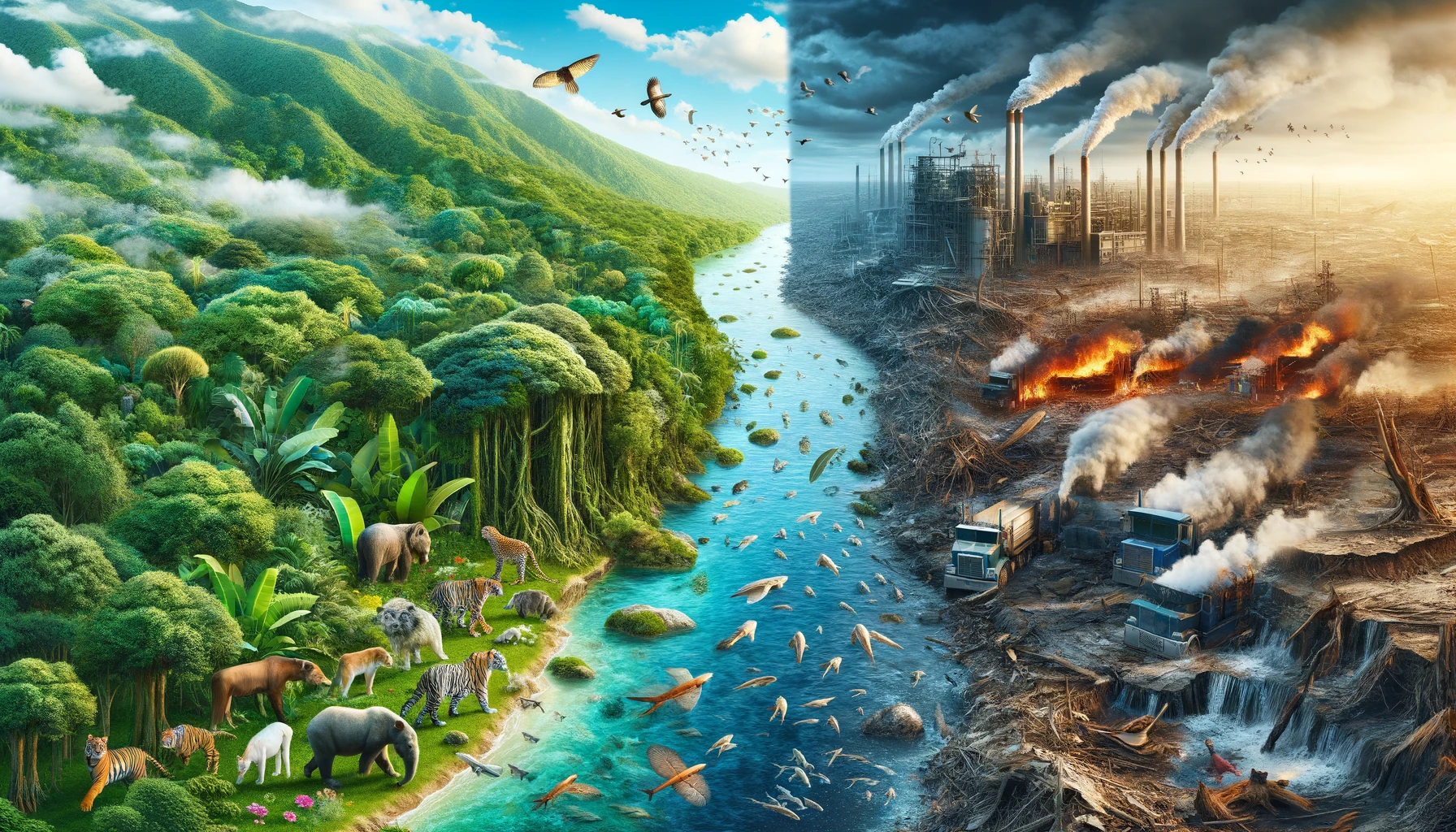The term “Anthropocene extinction,” or Holocene extinction, refers to an ongoing mass extinction event, the first of its kind to be primarily driven by the activities of one species: Homo sapiens. Unlike previous mass extinctions, which were triggered by cataclysmic natural events such as asteroid impacts and massive volcanic eruptions, the Anthropocene extinction is a direct consequence of human actions. This extinction event is unfolding during the proposed Anthropocene epoch, a period marked by significant human influence on Earth’s geology and ecosystems. This article delves into the causes, impacts, and potential solutions to the Anthropocene extinction, offering a comprehensive overview of this critical issue facing our planet.
Unprecedented Human Impact
The Anthropocene epoch captures the era in which human activity has become the dominant influence on the climate and the environment. This period is characterized by rapid industrialization, population growth, and technological advancement, leading to unprecedented environmental changes. The effects of these changes are so profound that they have triggered a mass extinction event, threatening the biodiversity that underpins the health of our planet.
Drivers of the Anthropocene Extinction
- Habitat Destruction: The single most significant driver of biodiversity loss is habitat destruction. The expansion of agriculture, urban areas, infrastructure, and mining has fragmented and degraded natural habitats, leaving countless species without the space and resources they need to survive.
- Climate Change: Climate change, driven by the release of greenhouse gases from fossil fuel combustion, deforestation, and industrial processes, is altering ecosystems at a pace that many species cannot adapt to. Rising temperatures, changing precipitation patterns, and increased frequency of extreme weather events are reshaping the living conditions for many organisms, leading to shifts in species distributions and, in some cases, extinction.
- Pollution: The introduction of pollutants into the environment has devastating effects on species and ecosystems. Air, water, and soil pollution, stemming from industrial activities, agricultural runoff, and waste disposal, introduce toxic substances that can lead to disease, reproductive failures, and death in wildlife.
- Overexploitation: The overharvesting of plants and animals for food, medicine, pets, and other uses has led to dramatic declines in some species. Overfishing and unsustainable hunting are particularly pressing issues that have pushed numerous species towards extinction.
- Invasive Species: The introduction of non-native species to new ecosystems, whether accidentally or intentionally, can disrupt local ecosystems. Invasive species often compete with native species for resources, predate on them, or introduce diseases, leading to the decline or extinction of native species.
Consequences and Challenges
The loss of biodiversity and the collapse of ecosystems have far-reaching consequences not only for the natural world but also for human societies. Ecosystem services, such as pollination, water purification, climate regulation, and disease control, are vital for human survival. The degradation of these services can lead to food and water shortages, increased exposure to natural disasters, and the spread of diseases.
The Anthropocene extinction poses a moral challenge as well. The question of our responsibility to the millions of species with which we share our planet is more pressing than ever. The current extinction crisis is not only a biological issue but also an ethical one, reflecting the impact of our choices and actions on the planet’s health and future.
Pathways to Mitigation
Addressing the Anthropocene extinction requires a multifaceted approach. Conservation efforts, such as the establishment of protected areas, the restoration of degraded ecosystems, and the implementation of sustainable land-use practices, are crucial. Additionally, combating climate change through the reduction of greenhouse gas emissions and transitioning to renewable energy sources is imperative.
Public awareness and engagement are also vital. By understanding the impacts of our actions on the environment and adopting more sustainable lifestyles, individuals can contribute to the preservation of biodiversity. Education, advocacy, and policy reform play critical roles in fostering a culture of conservation and sustainability.

The Anthropocene extinction is a defining issue of our time, highlighting the profound impact humans have on the Earth. While the challenges are significant, there is still time to mitigate the effects of this mass extinction through concerted global action. By prioritizing biodiversity conservation, addressing climate change, and fostering a deeper connection to the natural world, we can work towards a more sustainable and equitable future for all species, including our own.
